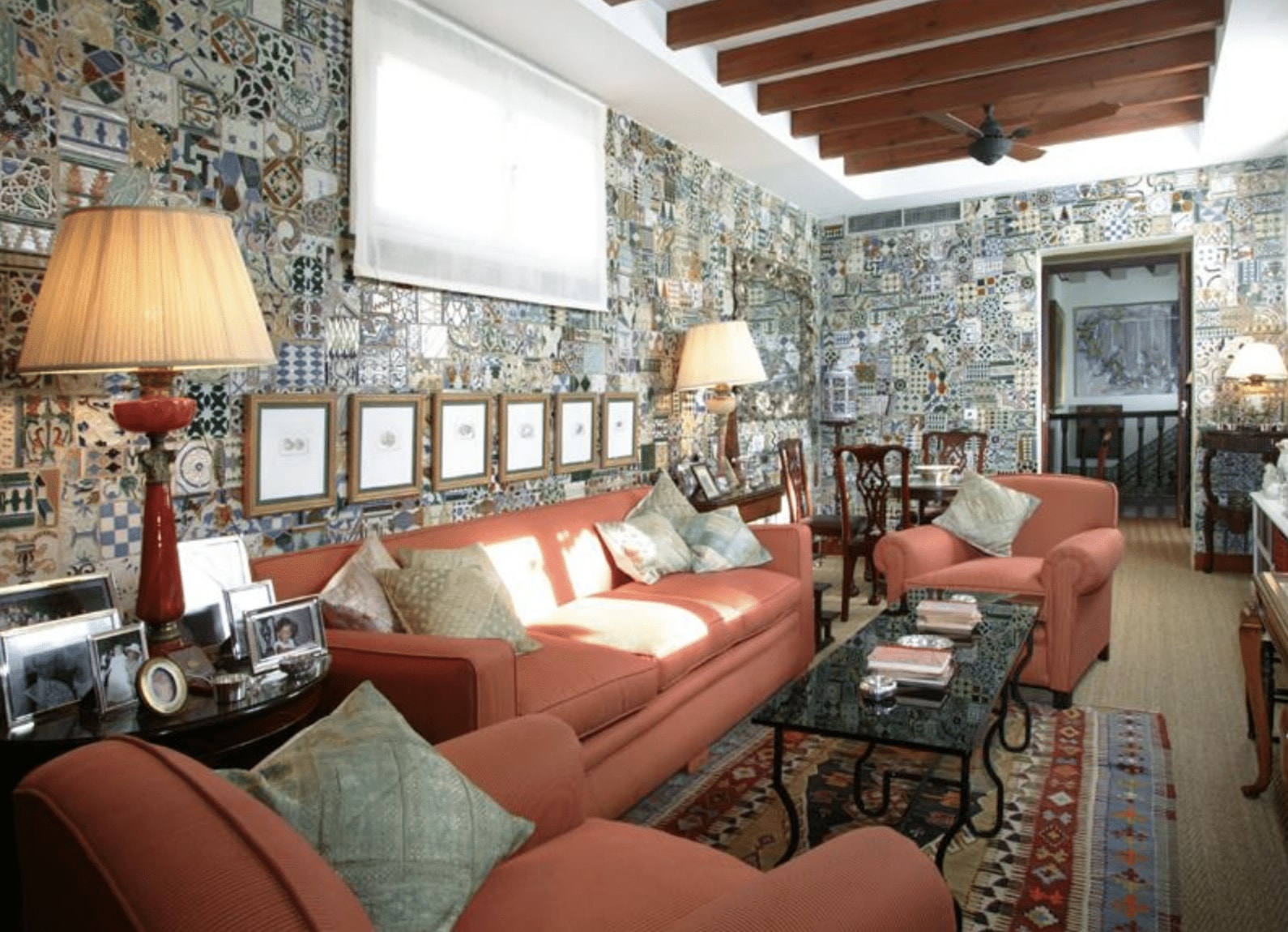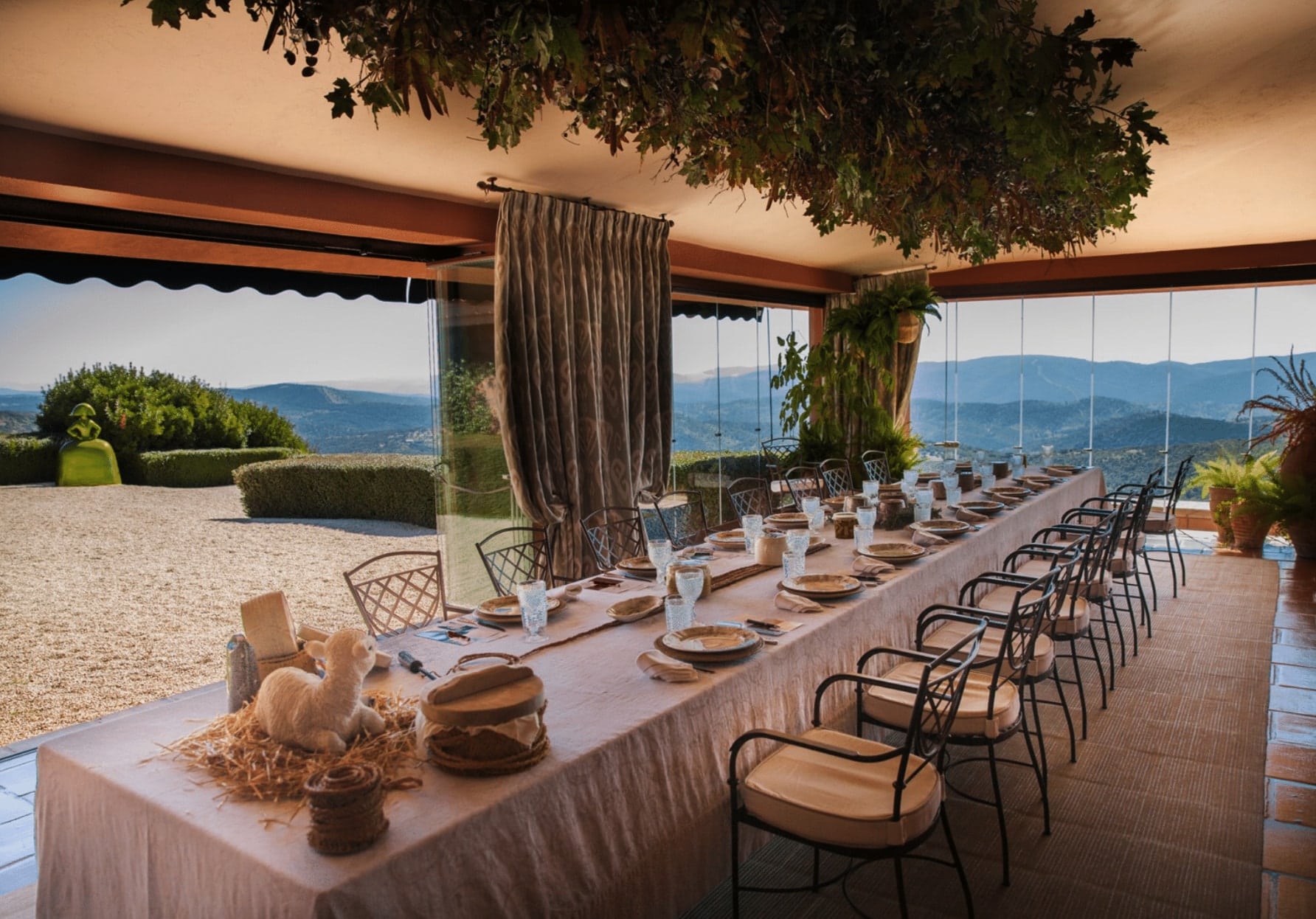flamenco, fiestas, bullfighting and raw passion
- Home
- Gstaad chalets
- Destinations by country
- Europe
- Austria
- Belgium
- Croatia
- Brac
- Čiovo Island
- Croatia
- Dalmatia
- Dubrovačkoneretvanska županija
- Dubrovnik
- DubrovnikNeretva County
- Elaphiti Islands
- Hvar
- Inland waters of Croatia
- Istarska
- Istria
- Korčula
- Licko-senjska
- Općina
- Primorje-Gorski Kotar
- Šibenik
- Sibenik-Knin
- Split
- Split-Dalmatia County
- Splitsko-dalmatinska
- Splitskodalmatinska županija
- Vis Island
- Zadar
- Cyprus
- Denmark
- Finland
- France
- Germany
- greece
- Agia Pelagia
- Agios Dimitrios
- Agios Ioannis
- Agios Nikolaos
- Agios Nikolaos Municipality
- Akrata
- Alikanas
- Analipsi
- Andros
- Anemogiannatika
- Ano Vasilikos
- Apraos
- Argassi
- Asteri
- Athens
- Attica
- Central Greece
- Central Macedonia
- Chaniotis
- Corfu
- crete
- Agia Marina
- GR
- Agios Nikolaos Municipal Unit
- Almirida
- Aspro
- Blue Hills Villas
- Chania
- Chorafakia
- Chrysopigi
- COCO-MAT Kassiopeia Residence Chania
- Crete
- Crete-agios nikolaos
- Crete-heraklion
- Crete-rethymnon
- Daratsos
- Divine Villas Crete
- Elounda
- Falasarna
- Ferma
- Fournados
- Galatas
- Gazi Municipal Unit
- Gerani
- Goudouras
- Gramvousa
- Hotel Villa Kontis
- Kalathas
- Kalivos
- Kalogeros
- Kampani
- Kastellos
- Kato Gouves
- Kokkino Chorio
- Kolymvari
- Kondomari
- Korfalonas
- Kounoupidiana
- Kounoupitsa
- Koutsouras
- Kyrianna
- Ligaria
- Livadi
- Maleme
- Malia
- Maroulas
- Mavros Kolimpos
- Moni Arkadiou
- Okeanides Villas
- Paleokastro
- Perivolia
- Petra Villas
- Pikris
- Pithari
- Pitsidia
- Plaka
- Plakias
- Platanias
- Ravdoucha
- Rethymno
- Schisma Elountas
- Sfakaki
- Sisi
- Stalos
- Sternes
- Tavronitis
- Tria Monastiria
- Tsivaras
- Vamos
- Vamvakopoulo
- Varvara
- Villa Aphrodite – Luxury Villas on Crete
- Villa Troules
- Violi Charaki
- Vlichada
- Xirokampi
- Dassia
- Epirus
- Gaios
- Galaro
- Gastouri
- Georgioupoli
- Greece
- Halkidiki
- Hersonissos
- Ionian Islands
- Kalami
- Kalymnos
- Kassiopi
- Kastelorizo
- Katavolos
- Kato Korakiana
- Kea
- kefalonia
- Kentroma
- Kerkira
- Kissamos
- Kremithas
- Lefkada
- Lesbos
- Lithiasmenos
- Longos
- Macedonia and Thrace
- Malevizi
- Milos
- Moudania
- Mykonos
- Agios Ioannis Diakoftis
- GR
- Agios Sostis
- Agrari Beach House
- Akra Alogomandra
- Aleomandra
- Ano Mera
- Elia
- Elia Beach
- Fanari
- Faros Armenistis
- Ftelia
- Horseland Mykonos
- Kalafati
- Kastro
- Klouvas
- Kolitsani
- Le Beluga
- Municipality of Mykonos
- Mykonos Invest SA
- Mykonos-Ano Mera
- Mykonos-Elia
- Mykonos-Kalafati
- Mykonos-Ornos
- Mykonos-Platis Gialos
- Mykonos-Tourlos
- Mykonos-Town
- Ornos
- Platis Gialos
- Plintri
- Psarrou
- Pyrgi
- Tourlos
- VILLA ANALIA by LUXURY KEY
- Villa Landi Mykonos
- Mylopotamos
- Naoussa
- Naxos
- Nisaki
- Nymfes
- Ozias
- Panorama
- Paros
- Paxi
- Paxos
- Pelekito Corfu
- Peloponese
- Peloponnese, Western Greece and the Ionian
- Platonas
- Pogonia
- Porto Cheli
- Poulades
- Prinos
- Rachi
- Region of Crete
- Rethimno
- Rhodes
- Roda
- Samos
- Santorini
- Saronic Island
- Sfakera
- Sifnos
- Souleika
- South Aegean
- Southern Aegean
- Spetses
- Sporades
- Stroggili
- Syros
- thessaly
- Thessaly and Central Greece
- Tsilivi
- Vathianos Kampos
- Vola
- Zakinthos
- Zakynthos
- Άγιος Στέφανος
- Israel
- Italy
- Abruzzo
- Apulia
- Bogliasco
- Buggiano
- Cala Moresca
- Calabernardo
- Calabria
- Campania
- Cantagrillo
- Cassano All’Ionio
- Castellabate
- Castiglione di Sicilia
- Chianni
- Città della Pieve
- Città Povera
- Colle di Val DElsa
- Cortina
- Culcasi
- Dolomites
- Emilia Romagna
- Firenze
- Fontane Bianche
- Genova
- Goraiolo
- Greve in Chianti
- Il Prato
- Italian Castles
- Italy
- Lake Como
- Lake Garda
- Lake Maggiore
- Lazio
- Le Marche
- Lecce
- Lido di Camaiore
- Lido di Noto
- Liguria
- Livorno
- Località Pignattaia
- Lombardia
- Lombardy
- Marina di Modica
- Marliana
- Montallegro
- Monteggiori
- Monticchiello
- Petralia
- Piedmont
- Piemonte
- Pietrabuona
- Pirato
- Pizzo
- Puglia
- Radicondoli
- Roreto
- Rosolini
- San Corrado di Fuori
- San Grato
- Santa Maria del Focallo
- Sardegna
- Sardinia
- Sicily
- Acireale
- IT
- Agrigento
- Alcamo
- Avola
- Buseto Palizzolo
- Caltagirone
- Capo dOrlando
- Carini
- Carrozziere
- Castellammare del Golfo
- Castelvetrano
- Catania
- Cefal
- Cefalu
- Donnafugata
- Favignana
- Favignana TP
- Gratteri
- Licata
- Marausa Lido
- Marsala
- Mascali
- Matino
- Messina
- Noto
- Paceco
- Pedara
- Plemmirio
- Pollina
- Ragusa
- Ragusa RG
- Regusa
- Reitani
- Ribera
- San Vito Lo Capo
- Savoca
- Scicli
- Sicily
- Siracusa
- Taormina
- Trapani
- Trecastagni
- Triscina
- Sori
- Syracuse
- Toscana
- Toscany
- TrentinoAlto Adige
- Tuscany
- Abbadia
- IT
- Amola
- Ansedonia
- Arezzo
- Bagno Vignoni
- Bibbiena
- Bucine
- Buonconvento
- Camaiore
- Canova
- Capannori
- Capolona
- Casole dElsa
- Castelfiorentino
- Castelfranco di sotto
- Castelnuovo Berardenga
- Castelnuovo magra
- Castiglion Fiorentino
- Cinigiano
- Civitella in Val di Chiana
- Cormezzano
- Cortona
- Corvarola
- Crespina Lorenzana
- Cutigliano
- Firenzuola
- Foiano della Chiana AR
- Forte dei Marmi
- Fratticciola
- Gaiole In Chianti
- Gambassi Terme
- Gavorrano
- Grosetto
- Grosseto
- Lajatico
- Lamporecchio
- Le Contesse
- Loro Ciuffenna
- Lucca
- Lucignano
- Marina di Pietrasanta
- Massa
- Massarosa
- Montaione
- Montalcino
- Montecatini Terme
- Montegonzi
- Montemurlo
- Monteroni dArbia
- Monterosso al Mare
- Montespertoli
- Montespertoli FI
- Montevarchi
- Panzano In Chianti
- Peccioli
- Pescaglia
- Petrognano
- Pienza
- Pietrasanta
- Pistoia
- Poggio di Loro
- Poggio Rusco
- Pontassieve
- Pontremoli
- Poppi
- Portovenere
- Portovenere SP
- Radicofani
- Renaia
- Salano
- San Casciano dei Bagni
- San Casciano dei bagni SI
- San Gimignano
- San Venanzo
- Sarteano
- Scandicci
- Seravezza
- Siena
- Sinalunga
- Subbiano
- Tavarnelle Val di Pesa
- Tavarnuzze
- Tresana
- Tuscany
- Verpiana
- Vicopisano
- Volterra
- Umbria
- Acquasparta
- IT
- Amelia
- Assisi
- Bevagna
- Campello Sul Clitunno
- Castiglione del Lago
- Citta della Pieve PG
- Citta di Castello
- Collevalenza
- Deruta
- Gualdo
- Gubbio
- Massa Martana
- Molino dei Lunghi
- Monte Castello di Vibio
- Monte Santa Maria Tiberina PG
- Montecchio
- Montone
- Narni TR
- Panicale
- Passignano sul Trasimeno
- Piegaro
- Santa Maria degli Angeli
- Solfagnano
- Tavernelle
- Terni
- Todi
- Trestina PG
- Umbertide
- Veneto
- Vigonovo
- Monaco
- Montenegro
- Netherlands
- Portugal
- Slovakia
- Slovenia
- spain
- Andalucia
- Atalaya Isdabe
- Balearic Islands
- Barcelona
- Benahavís
- Cala dOr
- Canarias
- Castile and León
- Catalonia
- Ciutadella de Menorca
- Costa Brava
- Costa del Sol
- Deya
- El Paraíso
- Es Cubells
- Formentera
- Girona
- Ibiza
- Las Lagunas de Mijas
- Lleida
- Llevant
- malaga
- Mallorca
- Marbella
- Miravalles
- Playa de Palma
- Puerto Banus
- Sa Pobla
- Sant Antoni de Portmany
- Sant Rafel
- Santa Eularia des Riu
- Santa Gertrudis de Fruitera
- Siesta
- Spain
- Valencia
- Sweden
- Switzerland
- Turkey
- United Kingdom
- Amroth
- Angle
- British Virgin Islands
- Chiswick
- Crymych
- Dale
- England
- Fishguard
- Haddington
- Horton
- Lampeter Velfrey
- Llangennith
- Llanmadoc
- Manorbier
- Milford Haven
- Narberth
- New Hedges
- Parkmill
- Penally
- Pendine
- Penmaen
- Pilton Rhossili
- Princes Gate
- Reynalton
- Saint Florence
- Scotland
- Slade Oxwich
- Solva
- Somerset
- Stepaside
- Taunton
- Templeton
- Tenby
- United Kingdom
- Wales
- Whitland
- America & The Caribbean
- Aruba
- Bahamas
- Barbados
- Brazil
- Canada
- Cayman Islands
- Costa Rica
- Dominican Republic
- Mexico
- Panama
- Puerto Rico
- Saint Barts
- Saint Martin
- The Caribbeans
- Anguilla
- Grenada
- Guadeloupe
- Saint Martin
- Sint Maarten
- St. Barts
- Anse des Cayes
- CA
- Colombier
- Gouverneur, Saint Barthelemy
- Lorient
- Lorient, Saint Barthelemy
- Marigot
- Marigot, Saint Barthelemy
- Morne de Vitet
- Petit Cul-de-Sac
- Petite Saline
- Petite Saline, Saint Barthelemy
- Plage des Flamands
- Pointe Milou
- Saint Barthelemy
- Saint-Barthelemy
- Saint-Barthelemy Island
- Saint-Barthelemy-le-Plain
- Saint-Francois
- Saint-Jean, Saint Barthelemy
- St-Jean
- Vitet
- United States
- Arizona
- California
- Colorado
- Connecticut
- Disney Orlando
- Florida
- Aventura
- US
- Bay Lake
- Boca Raton
- Cape Canaveral
- Clearwater
- Cocoa Beach
- Dania Beach
- Davenport
- Davie
- Deerfield Beach
- Delray Beach
- Destin
- Eustis
- Fort Lauderdale
- Four Corners
- Haines City
- Hallandale Beach
- Hollywood
- Jacksonville Beach
- Kendall
- Key Biscayne
- Kissimmee
- Lake Worth
- LauderdalebytheSea
- Loughman
- Miami
- Miami Beach
- Miami Shores
- Miramar Beach
- Naples
- New Castle
- North Naples
- Oakland Park
- Palm Beach Gardens
- Pompano Beach
- Port St. Lucie
- Riviera Beach
- St. Augustine
- Sunny Isles
- Vero Beach
- Wesley Chapel
- West Palm Beach
- Wilton Manors
- Georgia
- Hawaii
- Idaho
- Indiana
- Mississippi
- Nevada
- New Jersey
- New York
- NY
- Oklahoma
- Tennessee
- Texas
- United States
- Utah
- Virginia
- Washington
- Wisconsin
- Virgin Islands
- Asia & Oceania
- Cambodia
- French Polynesia
- Indonesia
- Maldives
- New Zealand
- Philippines
- Sri Lanka
- Thailand
- United Arab Emirates
- Africa
- Europe
- Triangle/Properties
- Partners
- B2B Villa Tracker
- Join us
- Media
- About Us
- Contact
- Route de Lurin
- GR
- Venelles
- St. Jean
- MF







